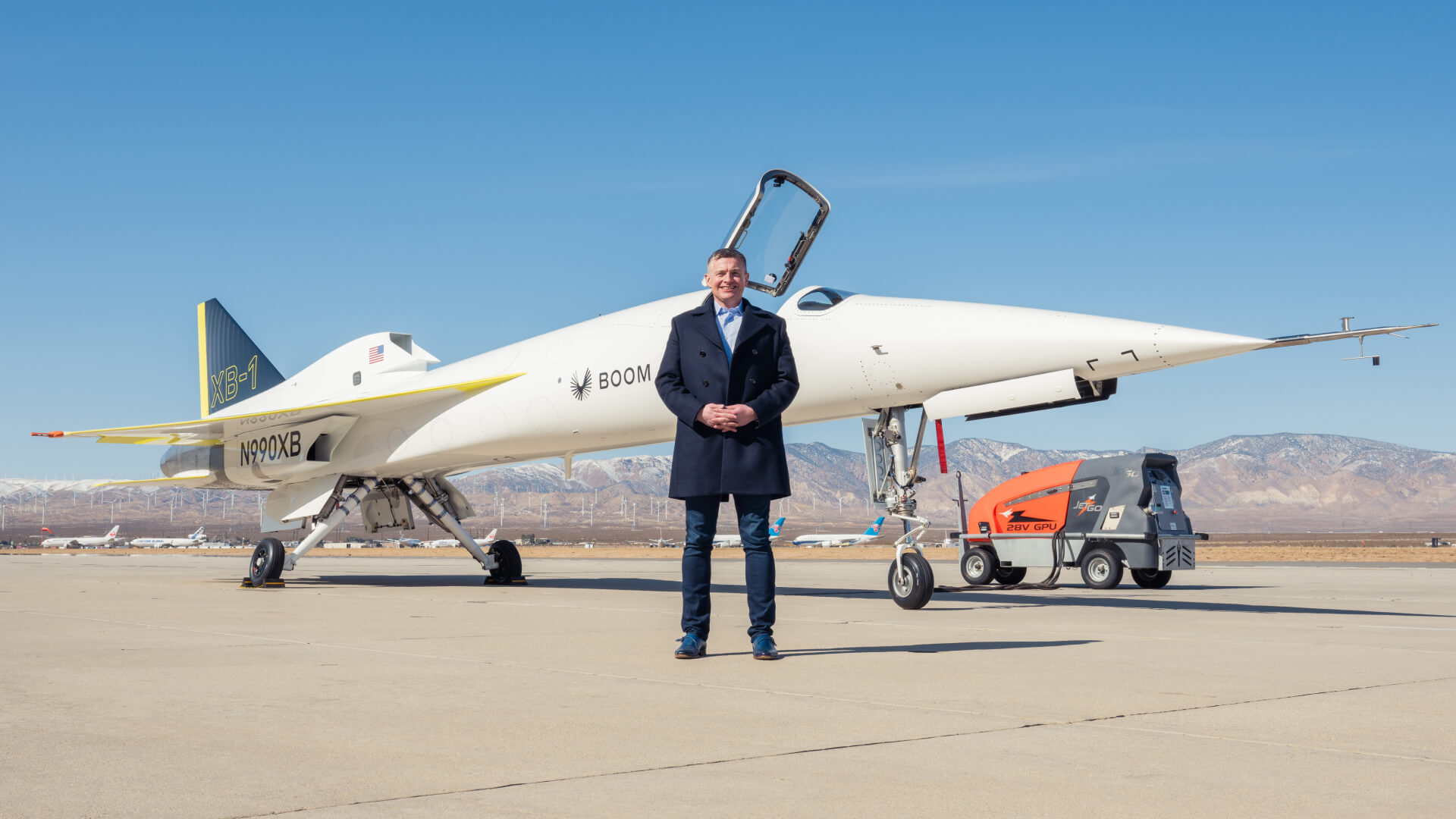Boom recently opened its new Ask An Engineer Twitter chat with an exploration of all things 3D printing.
Stratasys, which partnered closely with Boom during the build of its supersonic demonstrator, XB-1, joined the chat to answer questions about materials, safety and the supply chain.
Here’s a snapshot of the chat, with insights from Boom Manufacturing Engineer Ruslan Pshichenko. Don’t see your question answered? Drop us a line at boomsocial@boomaero.com.
What material are the 3D-printed parts on XB-1 made of?
Most parts are printed out of ULTEM 9085 CG using Stratasys printers. For context, three printers met the majority of needs for the build: the Stratasys F900, Stratasys 450mc and Stratasys F370.
ULTEM 9085 CG is a flame-retardant, high-performance thermoplastic that features a high strength-to-weight ratio, excellent heat resistance and high-impact strength.
There are also a handful of parts near the engines that are printed out of titanium due to the rare metal’s superior ability to tolerate extreme heat.
Are there any safety issues with using 3D-printed aircraft parts?
Safety is always the top priority, so safeguards are put in place to ensure the integrity of parts.
3D printing, which is also called additive manufacturing, is a sensitive process. Several factors during a print could influence the strength of the final part. That’s why it’s important to ensure there is as little variance as possible between print jobs. All safety issues are mitigated with periodic specimen testing to ensure the strength of the material meets the expected allowables.
How else does the Boom manufacturing team use 3D printing?
Boom’s use of 3D printing is comprehensive, including:
The team used the Stratasys Fortus 450mc to print more than 750 drill blocks with FDM Nylon 12CF, an incredibly strong material that’s impregnated with carbon fiber. Additional drill blocks were printed with ULTEM 9085 and ASA. These custom blocks ensured the team accurately located the many fastener holes throughout XB-1’s airframe while drilling into materials such as carbon fiber and titanium. They used the blocks to precisely position twenty or more holes — instead of just one at a time.
→ Simulator parts for the XB-1 simulator
→ Functional prototypes and test fits
The Stratasys F370 typically prints with ASA, an economical and lower strength material that’s perfect for rapid prototyping and test fitting components. Using 3D-printed parts for test fitting supported design improvements. When the team eventually manufactured parts, each fit like a glove.
→ Layup tools for carbon fiber
Specifically designed parts that help with organization around the shophttps://www.youtube.com/embed/he40prJtX2g?feature=oembed
How does 3D printing save time in a manufacturing environment?
Lead time with traditionally manufactured parts, especially machined parts, can be 3 to 5 weeks on average. With additive manufacturing, those same parts are produced in as little as several hours.
If just one part is needed, it can be printed overnight rather than waiting weeks. And, when you can print tools optimized for assembly processes right on the shop floor, you can speed up your build without compromise.
Are there any aircraft parts that can’t be 3D-printed?
From a geometry standpoint, Boom hasn’t designed something that can’t be 3D printed in the hangar. In fact, we’ve 3D printed several parts because they were impossible to create using traditional methods. That being said, there have been parts that we machined in lieu of printing due to the strength requirements. Not all designs make sense to be 3D printed.
In this age of supply chain issues, can you give us an example of how 3D printing can make a difference in a manufacturing environment?
You’d hate to derail your test schedule waiting for weeks on a basic part that’s stuck in a container on a ship. If you can print the parts you need, then you avoid the supply chain risk entirely.
For the Boom team, the biggest difference 3D printing with Stratasys has made from a supply chain standpoint is the lead time reduction. Using traditional manufacturing, most parts take weeks to fabricate as opposed to hours with 3D printing. As long as you have everything you need in-house, such as material cans, build sheets and tips, there will rarely be delays on part production when using 3D printing.
What is the most complicated 3D-printed part installed on XB-1?
Another great question, and the answer might surprise you. The most complicated part was 3D printed out of titanium by Velo3D, which specializes in 3D printing metals. The part is a VBV (variable bleed valve) that is designed to pass bleed air from the engine compressors.
A titanium VBV system is installed on each of XB-1’s engines. This system is critical to engine operation as it discharges compressor air to prevent engine stall. Due to the complex thin-walled geometry, the VBV went through several print iterations before making it onto the aircraft.
Do Stratasys printers work consistently? Do they require a lot of maintenance?
Stratasys equipment is extremely robust and designed for factory operation. Polymer feedstock simply needs to be kept dry. Regular preventative maintenance results in peak performance.
3D printing aircraft parts was highly unusual 20 years ago, and the technology is advancing so rapidly that manufacturers are testing and certifying new applications daily.
With 3D printing, the team was able to quickly create prototypes and test parts that otherwise would have taken weeks or months to machine. During the build of a one-of-its-kind aircraft like XB-1, it proved invaluable.
Click here to learn more about how the team used Stratasys printers. Click here for Stratasys’ XB-1 case study.







